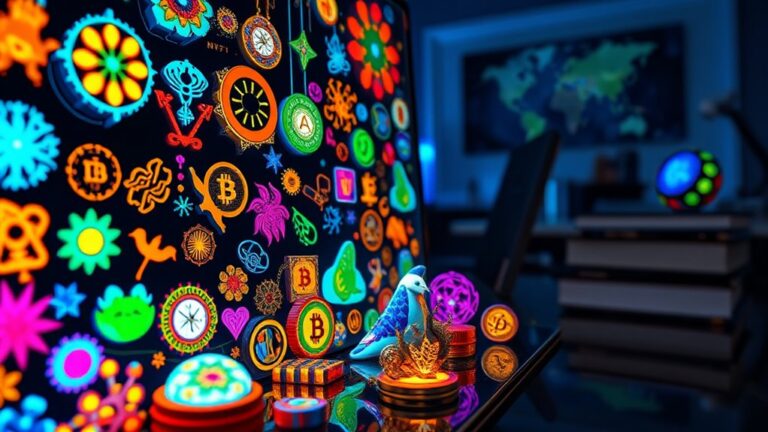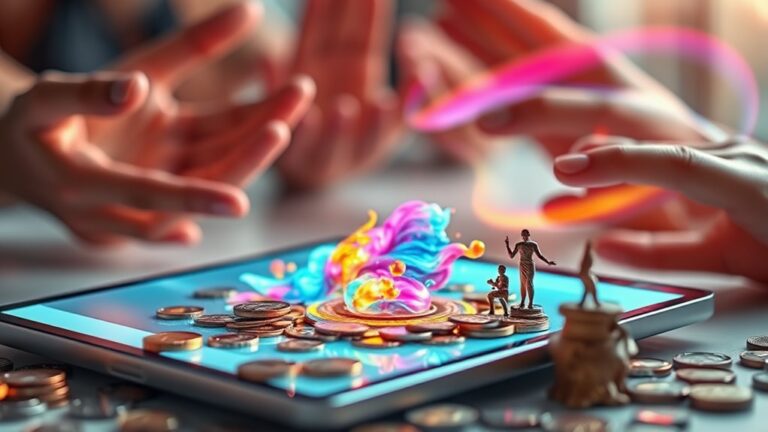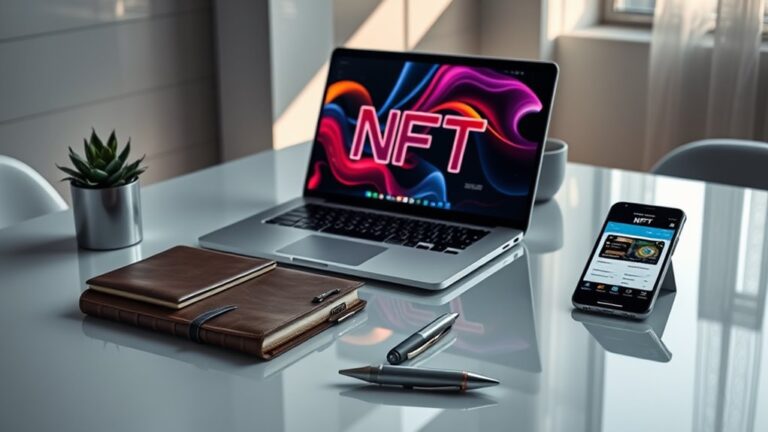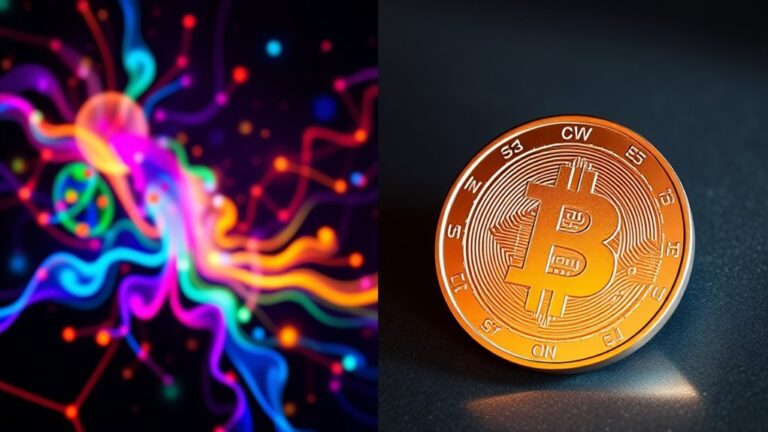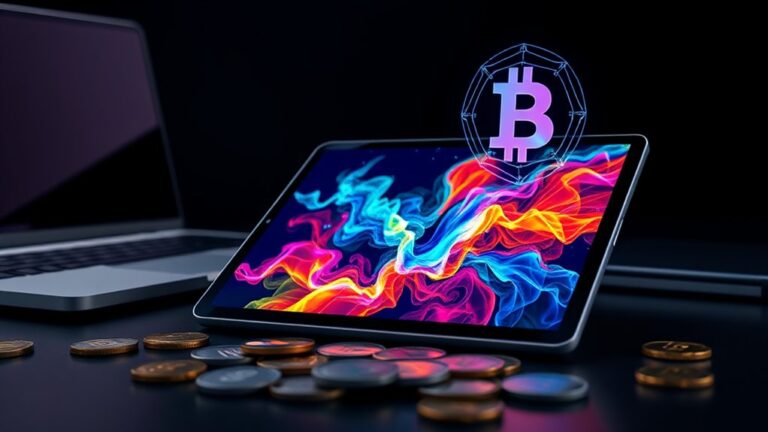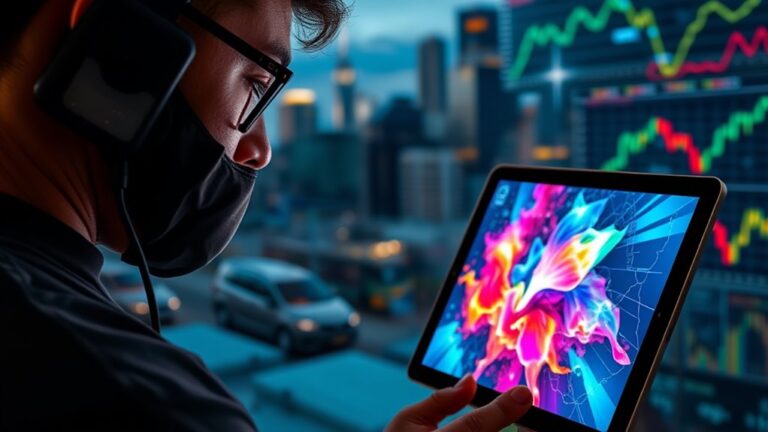
How to Buy and Sell NFTs: A Step-by-Step Guide
To buy and sell NFTs, one must first understand what they are: unique digital assets on a blockchain. Next, choose a suitable marketplace like OpenSea or Rarible, considering fees and available NFTs. Create a digital wallet, such as MetaMask, to store your NFTs securely. When purchasing, connect your wallet, browse listings, and complete transactions. To sell, mint your own NFTs and apply effective marketing strategies. Continue to explore this process for a thorough understanding of NFT transactions.
Key Takeaways
- Choose a suitable NFT marketplace like OpenSea or Rarible, considering fees, blockchain support, and NFT variety.
- Set up a digital wallet, such as MetaMask, to store and manage your NFTs securely.
- Connect your wallet to the marketplace and browse available NFTs using filters to find your desired assets.
- Purchase NFTs through fixed prices or auctions, keeping in mind associated gas fees for transactions.
- To sell NFTs, list them on your chosen marketplace, providing high-quality images and detailed descriptions to attract buyers.
Understanding NFTs and Their Types
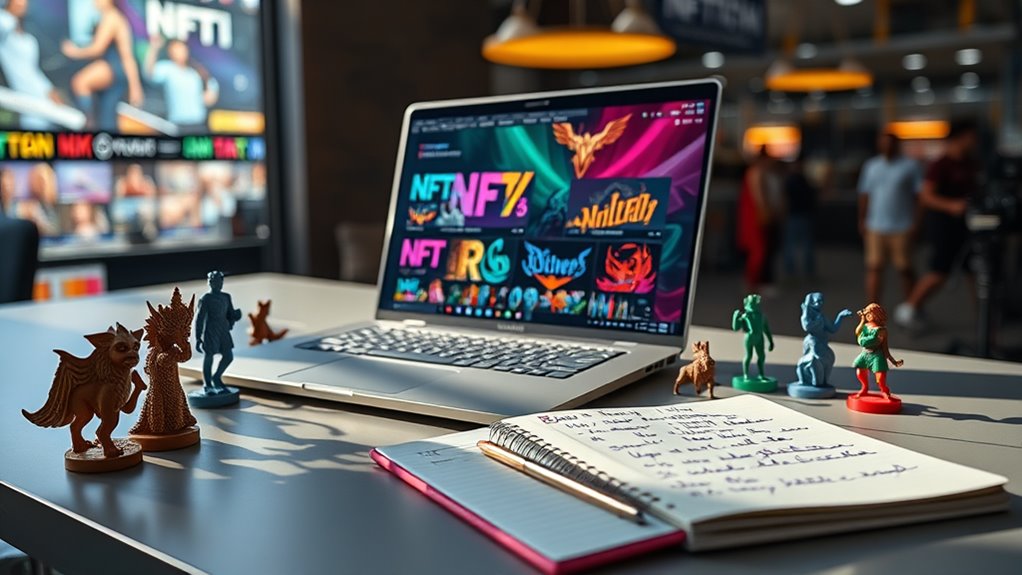
Non-fungible tokens, commonly known as NFTs, represent a significant innovation in the domain of digital assets.
These unique digital items are stored on a blockchain, which secures their ownership and guarantees transparency. NFTs can take various forms, including digital art, music, videos, and even virtual real estate.
Each NFT is distinct and cannot be replicated, making it a non-interchangeable asset. The market value of NFTs fluctuates based on supply and demand, with creators often using them to represent digital artworks or collectibles. Additionally, NFTs are created through a process called minting, where digital assets are transformed into unique tokens on the blockchain.
As the NFT landscape grows, understanding the different types, such as artwork, music, and collectibles, is essential for anyone interested in buying or selling these digital assets.
Choosing the Right NFT Marketplace

When selecting an NFT marketplace, what factors should one consider to secure a successful buying or selling experience? Key aspects include marketplace fees, blockchain support, NFT variety, user interface, and security features. Additionally, understanding the different NFT marketplaces can help you make a more informed decision.
| Factor | Example Marketplaces | Considerations |
|---|---|---|
| Marketplace Fees | Binance (1%), Nifty Gateway (5%) | Assess transaction costs |
| Blockchain Support | OpenSea (multiple), Foundation (single) | Confirm compatibility with preferred blockchain |
| NFT Variety | OpenSea (diverse), SuperRare (art) | Choose based on desired NFT type |
| User Interface | Rarible (user-friendly) | Look for accessibility for beginners |
Setting Up to Buy NFTs

Setting up to buy NFTs involves several important steps that begin with establishing a digital wallet. A digital wallet is crucial for storing and managing NFTs securely. Users can follow these steps:
- MetaMask Installation: Download MetaMask as a browser extension for easy access.
- Creating a Wallet: Choose “Create a Wallet” for new setups or “Import Wallet” if already established.
- Seed Phrase Management: Safely store the seed phrase, as it is essential for wallet recovery.
MetaMask is a hot wallet that primarily supports Ethereum-based NFTs. Users should also consider linking a hardware wallet, like Ledger, for added security. Additionally, maintaining wallet security is crucial, including regular updates to protect against potential threats.
MetaMask serves as a hot wallet for Ethereum NFTs, while integrating a hardware wallet like Ledger enhances security.
It is imperative to keep the seed phrase offline to prevent unauthorized access and guarantee a safe NFT buying experience.
Steps to Buy NFTs

Buying NFTs involves a series of systematic steps that guide users through the process.
First, individuals should choose an NFT marketplace, such as OpenSea or Rarible, considering factors like fees, specialization, and user experience.
Next, connecting a compatible cryptocurrency wallet, like MetaMask or Coinbase Wallet, is essential for secure transactions.
After setting up the wallet, users can browse available NFTs, using filters to narrow down options based on price or popularity.
Once a desired NFT is found, the purchase can be made, either through fixed prices or auctions, keeping in mind gas fees.
Finally, upon completion, the NFT will be stored in the wallet, allowing for easy access and organization of the digital assets. Additionally, understanding the NFT minting process can enhance a buyer’s knowledge of the value and uniqueness of the assets they are acquiring.
Creating and Minting Your Own NFTs
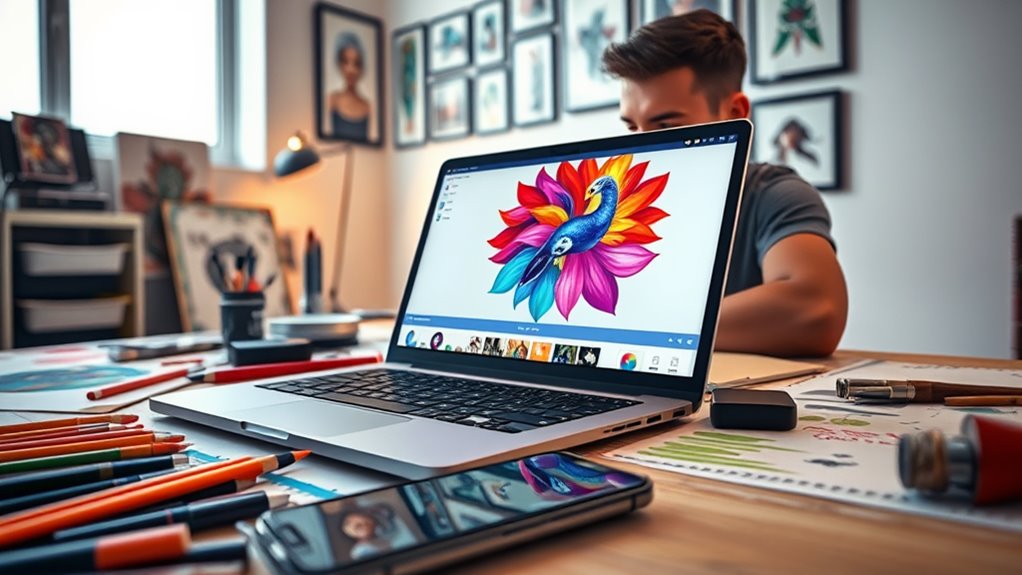
Creating and minting NFTs involves transforming digital content into unique assets that can be bought, sold, or traded on various platforms. The process consists of several key steps:
- Create Digital Content: Use tools like Adobe Creative Cloud or Blender to craft unique digital assets in formats such as images, videos, or music.
- Set Up a Crypto Wallet: Choose a wallet like MetaMask or Ledger to store cryptocurrencies needed for NFT transactions. Verify it is secure and compatible with NFT marketplaces.
- Choose an NFT Marketplace: Select a platform such as OpenSea or Rarible that aligns with your content type and offers favorable fees for minting and selling. Additionally, ensure you understand the importance of unique metadata that proves the authenticity and ownership of your NFTs.
Selling NFTs: Best Practices

Selling NFTs successfully requires an understanding of various strategies and best practices.
First, choosing the right marketplace is essential; platforms like OpenSea and Rarible cater to different audiences and charge varying fees. Sellers should also be aware of transaction costs, such as gas fees on the Ethereum blockchain, which can fluctuate based on demand.
When pricing NFTs, consider using fixed prices for clarity or auction formats to encourage competitive bidding. Researching market trends can help determine competitive prices based on asset rarity and quality.
Additionally, ensuring the authenticity of NFTs and using secure wallets will protect against scams.
Finally, high-quality images and detailed descriptions can enhance listings, attracting potential buyers effectively. Furthermore, understanding the current market trends can provide insights into which types of NFTs are gaining traction and may influence selling strategies.
Marketing Your NFTs for Better Sales
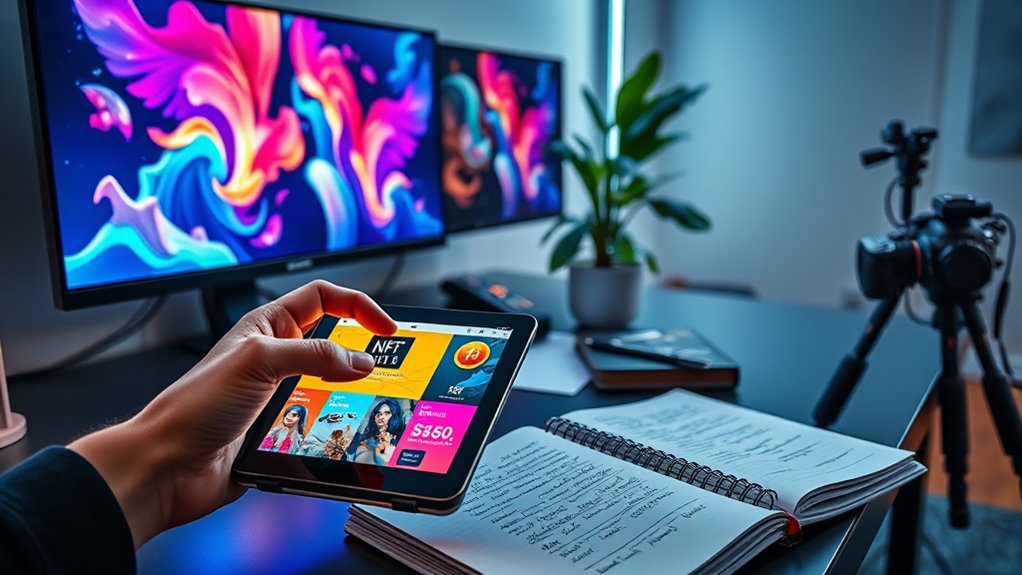
Effective marketing strategies play an essential role in enhancing NFT sales. Utilizing social media platforms for promotion, collaborating with influencers, and engaging with online communities can greatly increase visibility and interest in NFTs. Additionally, leveraging the concept of music NFTs allows artists to connect directly with fans and create a more engaged audience.
Social Media Promotion
When marketing NFTs, social media promotion plays a vital role in reaching potential buyers and building a community around digital assets.
Key platforms for this purpose include:
- Instagram: Perfect for visually showcasing NFT artwork through images and videos.
- Twitter: Ideal for real-time interactions and updates on NFT projects.
- Discord: Excellent for establishing a dedicated community around NFT collections.
Engagement strategies are essential for success. Utilizing hashtag campaigns can increase visibility, while high-quality content and storytelling helps connect emotionally with potential buyers.
Additionally, building a strong community by interacting with followers fosters loyalty. By leveraging these approaches, NFT sellers can enhance their marketing efforts and drive sales through effective social media promotion.
Collaborations and Partnerships
Collaborating with other creators and brands can greatly enhance the marketing efforts of NFTs, providing a pathway to increased visibility and community engagement.
Partnerships boost project visibility by involving multiple communities, generating discussions around the projects. These collaborations help in building communities on platforms like Twitter and Discord, fostering long-term engagement among members.
By aligning with established brands or influencers, projects can enhance their public image and drive sales through increased brand recognition. Furthermore, such collaborations can lead to innovative uses for NFTs, such as gaming assets, thereby attracting a wider audience.
Effective strategies include offering exclusive NFTs, cross-promoting projects, and providing whitelist access during pre-sales.
Hiring an NFT manager can streamline the process of identifying suitable partners and crafting persuasive collaboration proposals, ultimately leading to greater success in the NFT marketplace.
Engaging With Communities
Engaging with communities is essential for the success of NFT marketing, as it fosters a sense of belonging and loyalty among potential buyers.
Effective engagement strategies can greatly enhance the visibility and appeal of NFTs. Here are three key approaches:
- Authentic Communication: Maintaining transparency and genuine dialogue builds trust and loyalty within the community.
- Dynamic Content Creation: Utilizing multimedia formats, such as videos and animations, can capture attention and encourage interaction.
- Regular Updates: Providing consistent updates on project developments keeps the community engaged and informed, sustaining interest over time. Additionally, engaging with communities can help players understand the value of Play-to-Earn models, which can drive interest and investment in your NFTs.
Frequently Asked Questions
What Are the Environmental Impacts of NFTS?
The environmental impacts of NFTs include high energy consumption from Proof-of-Work mechanisms, significant carbon emissions during their lifecycle, e-waste generation from hardware requirements, and resource depletion, prompting a shift towards sustainable blockchain practices and renewable energy.
Can NFTS Be Stolen or Hacked?
Can NFTs really be stolen or hacked? Indeed, numerous methods exist, including hot wallet hacks and phishing attacks. Users must remain vigilant, employing secure practices to safeguard their digital assets against potential theft and fraud.
How Do I Transfer NFTS to Someone Else?
Transferring NFTs involves ensuring wallet compatibility, backing up wallets, and entering the recipient’s address accurately. After confirming the transaction, the sender waits for network processing before verifying the successful transfer through blockchain tools.
What Happens if the NFT Platform Shuts Down?
If an NFT platform shuts down, owners risk losing access to metadata and images, face financial uncertainties, and may encounter regulatory challenges. Utilizing decentralized storage and diversifying holdings can mitigate these risks and enhance security.
Are NFTS a Good Investment?
The question of whether NFTs are a good investment remains complex. While they offer unique ownership and potential high returns, risks such as market volatility and scams necessitate careful consideration and thorough research before investing.
Conclusion
To summarize, buying and selling NFTs involves understanding their types, selecting the right marketplace, and effectively managing transactions. By following the outlined steps, individuals can confidently navigate the NFT landscape, akin to a gold rush of the digital age. Creating and marketing unique NFTs further enhances the potential for success. As the NFT space continues to evolve, staying informed and adaptable is essential for maximizing opportunities in this innovative marketplace.

